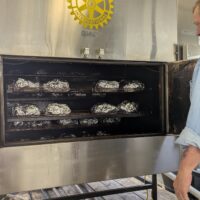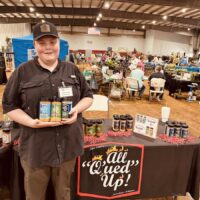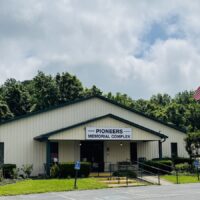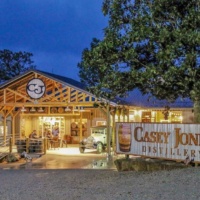(Editor’s Note: This column is the first installment in The Pandemic: Your Stories, a series of occasional articles by local residents describing our shared experiences during the coronavirus outbreak.)
Hopkinsville Brewing Co.’s experience with the shutdown started the evening of March 15, when a friend who works in city government texted me to say that rumors of a statewide-shutdown were circulating. I received the message during the intermission of “Mamma Mia!” at the Alhambra Theatre. I can’t tell you what happened during the second act because my mind was across the street at the brewery. I tried not to panic as I mentally raced through every possible scenario of what a shutdown might mean for our business, our employees and my family.

We received the official word when the rest of the state did. Around 9 the following morning, via social media, we learned that restaurants and bars would be closed that day at 5 p.m. About five hours later, we received guidance from the director of the Kentucky Guild of Brewers stating that Gov. Beshear had included breweries in the list of essential businesses that could conduct curbside and to-go sales. My partner, Joey, and I decided to open at noon and sell as much beer as we could until 5 p.m.
Things they don’t teach you in business class or brew school: how to reconfigure your business model in seven hours to survive a pandemic that will last an undetermined length of time. We immediately pivoted to online crowler can sales so that customers could pre-order their beer on our website and we could deliver it curbside to meet social distancing guidelines. (A crowler is a 32-ounce can that craft brewers fill to order in tap rooms.)
Similar lockdowns across the country ended up leading to a nationwide can shortage by month two, but we were lucky to have enough cans on hand before the pandemic, so this didn’t impact us too badly. We were also fortunate in that all of our servers have ‘real’ jobs outside the brewery and closing the taproom didn’t impact them as badly as it could have.
The shutdown went into effect three weeks after we opened our expansion space. Knowing that our monthly construction loans and mortgage on the new building would come due, we contacted our bank to find out if we could defer payments but they didn’t have answers, either. We called other banks to see if we could refinance our loans and avoid default, but everything was at a standstill as we all looked to the government — state or federal, whichever came up with answers first — for guidance. We applied for every Small Business Administration loan, grant and Payroll Protection Plan opportunity — you name it, we tried it. Whatever you saw in the media about trying to receive funding through the first round of PPP, I promise you the reality was worse. I spoke with five different banks to try to apply and each had different rules, requirements and applications.
The first — our current bank — wasn’t participating at that point because of the lack of guidance from the Department of the Treasury. The second took my application but said they would hold it until they started allowing partnerships to apply (the funding ran out before that happened). The next two wouldn’t take applications from any business that hadn’t had business checking accounts with their institutions at least a month prior to the shutdown. The fifth bank allowed us to open a checking account to meet that requirement so we could apply for funding. (I’m not blaming the banks; I do understand the guidance they received was piecemeal and incomplete.) We received our approval the day before the first round of funds was depleted.
As the weeks went on, we settled into a routine at the brewery. We still came to work and we still brewed, albeit a little less frequently. We’re a seasonal business and typically, we start increasing our production in the spring to meet demand later on in the summer. With a 75% decrease in sales, we scaled back production to every ten days. (We don’t filter our beer; once we package it in kegs, it has a shelf life of about six months so we weren’t overly concerned about anything we brewed during this time spoiling.)
Our typical taproom work day became one hour long as we ran cans of beer out to cars that pulled up at the patio to pick up orders between 5 and 6 p.m. five days a week. Saturdays, usually our busiest day under normal circumstances, became our slowest. We used the time to finally do all the things on our to-do lists that never seemed to get done: refinishing the biergarten furniture, reorganizing the grain room, running wiring. We got creative and found ways to collaborate with our neighbors on “Date-Night-to-Go” packages, featuring food by The Mixer, The Local and Butter & Grace, as well as activities from Griffin’s Studio and Museums of Historic Hopkinsville-Christian County. Six weeks in, we were finally able to bring our employees back so that Joey and I didn’t have to work every curbside shift.
I won’t sugarcoat it: being shut down for nine weeks has had a negative impact on the brewing industry. In April, a national survey conducted by the Brewers Association reported that 60 percent of breweries didn’t expect to survive three months under these conditions. We count ourselves very fortunate that we didn’t fall in that category and we owe it all to strong local support: each person who purchased a Date Night To-Go package, placed an online order or walked up to the taproom door to buy a can helped us survive this. It’s the strong community support that allowed us to tread water and not sink.
As we look forward to opening Friday, May 22, I won’t lie. I’m nervous.
We have new restrictions to follow and we’ve had to change our business model for the second time this year to pivot to table service in order to keep our employees and customers safer. But the shutdown proved to us that we —not just Hopkinsville Brewing Co. but all of Hopkinsville — can handle change, so we’ll come in tomorrow and pour our beer into plastic glasses and serve them to a taproom filled to just 33 percent capacity because if that’s what it takes to keep moving forward, that’s what we’ll do.





